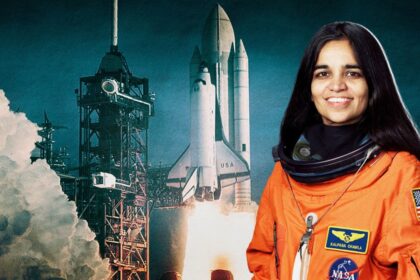
In the last series of articles on converting New Year resolutions into habits we had seen how habits get formed in individuals. As companies and institutions are also made up of groups of people … are they also susceptible to develop habits there as well?
I have taken a series of events that have happened in NASA -The National Aeronautics and Space Administration Have selected this agency as it is one of the most admired and powerful organisations in the world which attracts the most brilliant people.
I still remember reading about the first trip of the space shuttle Columbia as a very young boy and vividly remember the centre page spread that had come in our local newspaper Malayala Manorama which pictorially describing the technological marvels that the space shuttle was introducing some of which were as below.
- The ability to land back on earth like a normal airplane after completing its space travel.
- The large external fuel tank filled at launch with liquid oxygen and liquid hydrogen…These fuels were so extremely cold that the tank would ice over if not for its distinctive orange coat of foam insulation. Icing over was dangerous because of the excess weight that it brought about which compromised aerodynamics.
- The RCC (Reinforced Carbon Carbon) panels that covered the space shuttle which helped the space shuttle to withstand the high temperatures that it encountered during the re-entry back to earth. The RCC panels were very light weight and formed precisely to meet the optimal aerodynamic contours needed for the flight. These RCC panels were so impervious to the heat that one side would be cool to the touch even if a blowtorch were being applied to the other side. When the space shuttle started its re-entry, it would move at approximately 17500 miles per hour. Apart from a very brief rocket burn to slow the space shuttle, they would lose all their velocity through friction with the air. As the shuttle ripped through, the air temperature rises to thousands of degrees. The crew inside the space shuttle was protected from this very high temperature by the RCC panels.
The flight being discussed about is the Space Shuttle flight Columbia in 2003. I had tracked this flight at that point in time because one of seven crew members happened to be Indian born astronaut Kalpana Chawla. Kalpana Chawla was the first woman of Indian origin to go to space when she travelled in the Space shuttle Columbia during its mission in 1997. Kalpana who was born in Haryana, India did her bachelor’s in engineering from Punjab University before shifting base to the US in 1982 and became an American citizen in 1991.Her first space mission was as part of six member crew that flew Space shuttle Columbia flight STS-87 becoming the first Indian women to fly in space.
As explained earlier the space shuttle when it got launched was a technology and engineering marvel which had given a totally new dimension to space travel. So on 16th January 2003 when the space shuttle Columbia rocketed off a launch pad from the Kennedy Space Centre, Columbia it was the 28th mission of the Columbia space shuttle and the 113th space shuttle fleet as a whole.
During the two weeks in orbit the crew seamlessly did all the experiments that they were expected to do and all the equipment on board the space shuttle performed perfectly and normally.
On February 1st, 2003 while travelling at 17500 miles and hour the space shuttle pilot fired the retrorockets that slowed the Columbia just enough for it to leave orbit, lose altitude, and to begin its descent. On the way home rather than surfing down through the earth’s atmosphere losing height and speed the space shuttle broke up. All the seven crew were killed, and the pieces of the aircraft were strewed across California, Nevada, and New Mexico.
Investigations into the reasons for the crash revealed a breach in the thermal protection system on the leading edge of the left wing. The breach was initiated by a piece of insulated foam that separated from the external tank and stuck to the RCC during launch. During re-entry, this breach in the thermal protection system allowed super-heated air to penetrate and melt the aluminium structure of the left wing. This resulted in a weakening of the structure, failure of the wing, loss of control and breakup of the space shuttle.
What is interesting is I remember reading that even in the first flight of the space shuttle which I had followed as a small kid there were problems that occurred to the RCC by fuel tank foam induced damage hit which then had required replacement of about 300 tiles of the RCC panel. In most of the subsequent flights there after also the same issue had happened.
What the group studying the Columbia crash also found was that there were at least 8 times during the 15-day flight that the problem could have been noticed and corrective measures could have been taken which could have at least saved the lives of the crew. Listed below were some of the instances which came up which we will find are very common in most of our lives too…
- Day 4…NASA Chief Engineer asks if the crew has been asked to inspect for damage to Thermal Protection system…No response.
- Day 6…Mission control fails to ask David Brown to download video that he had taken of external tank separation. The video could have shown the damage.
- Day 6…NASA and National Imagery and mapping agency discuss possible request for shuttle imagery. No action taken.
- Day 7…Launch integration manager for the next shuttle launch starts identifying imaging assets only to be stopped by the chair of Mission management team.
- Day 7…Another request received from Manager safety and mission assurance for imagery. No action taken.
In addition to the above times there were also discussions which happened a few more times for analysis of imagery to understand if there was any damage to the shuttle but no action was taken.
As can be seen from the above not only did NASA miss out of looking into to understand the real reasons for the damages being caused to the RCC panels in the earlier flights it had also not even taken forward the instances in the present flight of the space shuttle where the damage could have been noticed.
With about 113 flights of the space shuttle having been completed NASA had got into a habit of using the justification of the past success as an excuse to not investigate the actual reason for the damage and to understand if any design modifications were required in the tank to prevent these from happening in future. The said habit was not based on any engineering logic.
We all run into these kinds of situations in our everyday work life also where we have found work arounds for many of the problems that we encounter. As these work arounds become a habit, we end up spending time daily addressing the same problems instead of these being flagged, investigated, and solved.
But with these workarounds its like flipping the coin and expecting it to always fall as heads. When it does fall on tails it leads to such disasters as we saw in the tragic space shuttle Columbia incident…
To know how to identify when such habits get formed without us even realising it and how we can overcome these problems …keep watching this space for more…



